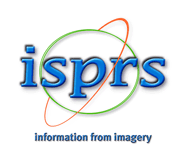Beyond Twinness and Twinning: Reflections on Urban Digital Twinnation from the Namur 3D Project
Keywords: Urban Digital Twins, Twinnation, Twinning, Twinness, Urban Governance
Abstract. The current burgeoning of urban digital twin projects is leading to a proliferation, and sometimes confusion, about what exactly a digital twin is. Analyses tend to develop in two directions. First, efforts are being made to define typologies and debates are taking place on the twinness of digital twins’ projects: the specific state and qualities of something called a digital twin. Second, research has been carried out into the empirical analysis of the twinning process, not to judge what is or is not a 'twin', but rather how the process of creating something called a 'twin' actually takes place. We argue that these two directions are not sufficient to fully understand the current phenomenon of the development of digital twin projects and its implications for the transformation of urban governance in the digital age. We therefore introduce the notion of twinnation to capture the gradual process of broader transformations in the representation and governance of a city brought about by the development and use of digital twins. Using the Namur 3D Project as an illustrative empirical case, we show that the notion of twinnation allows us to grasp the role of a larger number of social and technical entities and raises new fundamental issues both for empirical analyses of digital twin projects and for reflections on the development of digital twins better adapted to their development and use contexts. This work should be an initial step toward fostering both transdisciplinary research and collaborations involving stakeholders in the development of data-driven infrastructures of urban governance.





